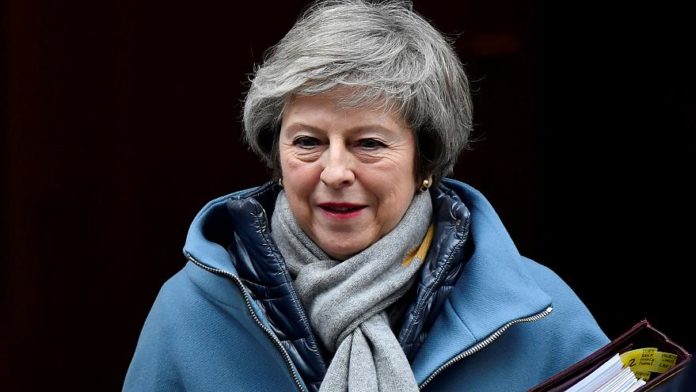LONDON, April 2, 2019 (BSS/AFP) – British Prime Minister Theresa May chairs a crucial meeting of senior ministers on Tuesday to seek a way out of a months-long Brexit deadlock, as the EU warned a no-deal departure from the bloc is growing more likely by the day.
The cabinet will discuss the next steps after lawmakers failed Monday to find a majority on any alternative to her divorce deal — an agreement they have also rejected three times already.
Brussels has set Britain an April 12 deadline to pass the agreement,
settle on an alternative or crash out of the European Union.
Backbenchers in parliament’s lower House of Commons seized the initiative
by holding a round of votes last week on eight alternative Brexit options,
but failed to agree on any of them.
It refined them down into four choices this week, but once again a
majority voted no to them all.
The results were closest for proposals to negotiate a permanent customs
union with the EU, but that still fell short by three votes.
The EU’s chief negotiator Michel Barnier warned Tuesday the parliamentary
gridlock meant Britain leaving without an orderly withdrawal agreement next
week was now “day after day more likely”.
“If the UK still wants to leave the EU in an orderly manner, this
agreement, this treaty is and will be the only one,” he told a think tank in
Brussels of May’s deal.
The EU has called an emergency summit for April 10 to agree on the next
steps.
Brexit Secretary Steve Barclay hinted the government could now bring May’s
deal back for a fourth vote this week and avoid a longer delay to Brexit that
would mean holding elections to the European Parliament next month.
“To secure any further extension, the government will have to put forward
a credible proposition to the EU,” he said.
“The only option is to find a way through which allows the UK to leave
with a deal.
“The best course of action is to do so as soon as possible.”
– Refusing ‘to compromise’ –
Britain voted by 52 percent to leave the EU in a 2016 referendum, but the
process has been mired in divisions over the terms of the divorce and what
kind of future ties to seek.
The political chaos forced May to postpone Britain’s exit from the
original date of March 29.
Monday’s voting saw proposals rejected for remaining in the EU’s customs
union and its single market.
A vote on plans for a second referendum and to block a no-deal Brexit also
fell short.
Nick Boles, the MP who had proposed a plan to stay in both the single
market and a customs union, quit May’s Conservative Party after the vote.
“I have given everything to an attempt to find a compromise,” an emotional
Boles told parliament.
“I have failed chiefly because my party refuses to compromise. I regret
therefore to announce I can no longer sit for this party,” he said.
The Conservatives rely on backing from Northern Ireland’s Democratic
Unionists for a narrow majority, which shrank even further with Boles’
departure.
However Anand Menon, professor of European politics at King’s College
London, told AFP that the latest votes meant Tuesday’s cabinet meeting would
be “relatively upbeat”.
“The cabinet can say… to parliament, ‘look, we gave you two chances to
come up with something, you’ve failed both times. Vote for (May’s) deal
otherwise next week there is a real danger of no-deal’.”
British newspapers’ front pages raked over the continued impasse.
“Farce as Commons fails to agree any Brexit plan AGAIN,” said the Daily
Mail.
The Daily Mirror called it “another night of division and despair”.



